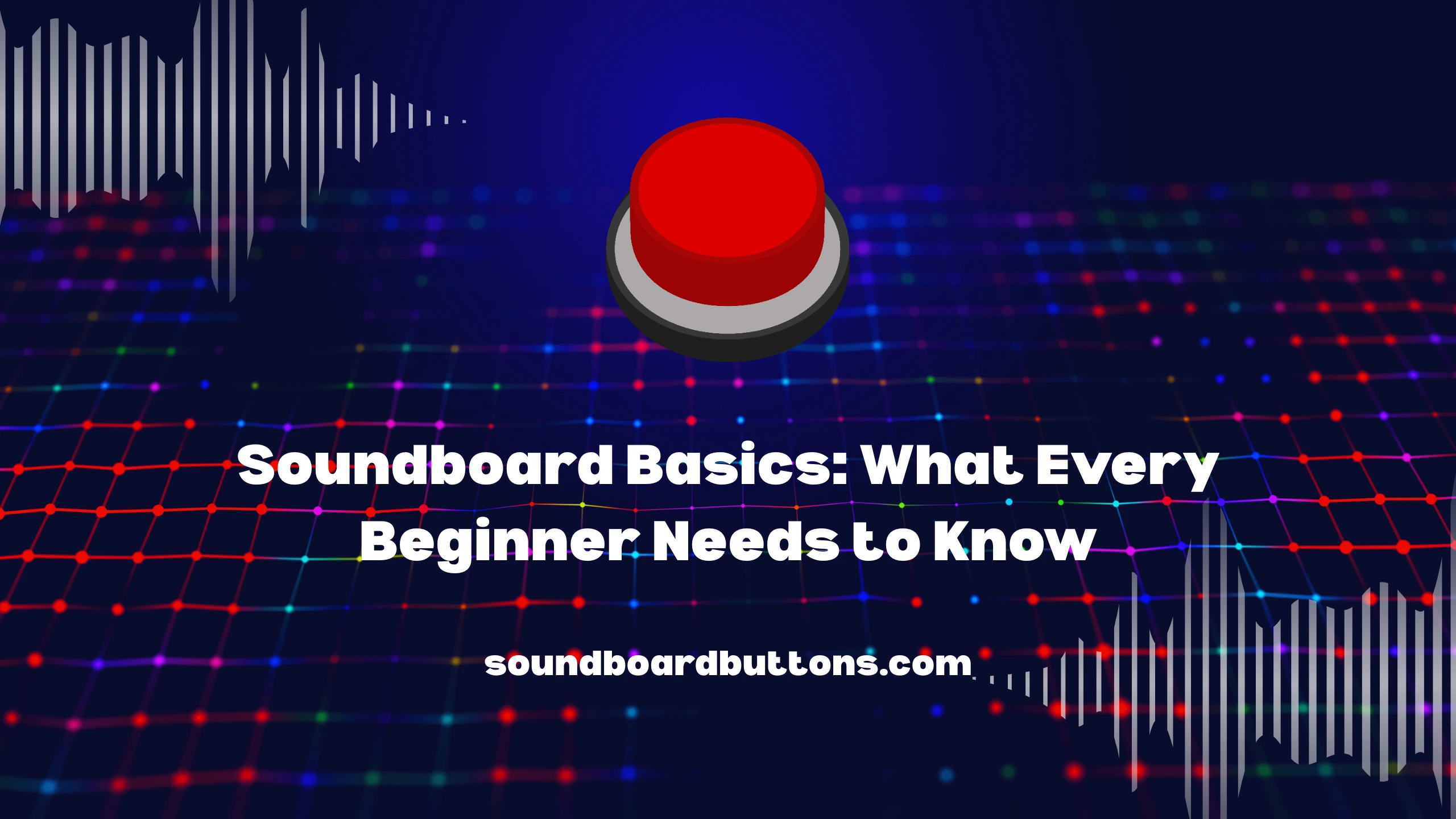Mastering a soundboard is one of the fastest ways to improve your audio quality, whether you're streaming, recording a podcast, or running a live event. It helps you control sound with precision, shape audio environments, and fix problems before your audience ever hears them.
Learning soundboard basics for beginners removes the guesswork and gives you a solid foundation to create clear, professional sound every time.
How Soundboards Work
Understanding how a soundboard operates can seem complicated at first, but it becomes clear once you recognize the main elements working together behind the scenes:
Input Channels
Each device, like a microphone or an instrument, connects to an input channel. These channels allow you to adjust each sound source independently, ensuring no one voice or instrument overpowers the others.
Gain and Trim Controls
Gain is the first volume control that adjusts the strength of an incoming signal. Without properly setting gain levels, you risk having distorted or extremely weak audio. A gentle adjustment of the gain ensures that your signal remains clean and balanced.
Equalization (EQ)
Equalizers on a soundboard allow you to tweak the bass, midrange, and treble frequencies. Understanding basic EQ settings helps beginners shape their audio to match the environment or the particular sound they want to emphasize.
Faders
Faders are sliders that manage the final volume level sent from each channel to the output. Smooth control over faders results in better overall mixes, whether live or recorded.
How to Choose Your First Soundboard
When choosing your first soundboard, it’s important to think beyond just the number of channels. Matching your current needs while allowing room for future growth makes a big difference. Analog soundboards are easier for beginners to understand and usually cost less, offering tactile control with fewer customization options. Digital soundboards, meanwhile, are packed with programmable settings, built-in effects, and better integration with modern devices, although they require a slightly steeper learning curve. If you're aiming for simple podcasts or live music setups, analog could be ideal, but for more complex productions, a compact digital mixer is a smarter investment.
Key features to prioritize include USB connectivity for recording or streaming, built-in effects like reverbs and compressors to enhance your sound quality, and portability if you plan to travel. Lightweight and compact soundboards make setup and transport much easier. Choosing a beginner-friendly model ensures you’ll have intuitive controls along with the versatility to develop your skills as your audio needs grow.
How to Set Up a Soundboard Correctly
Setting up your soundboard the right way the first time saves you hours of troubleshooting later. Follow these clear steps to ensure smooth performance.
Connect Your Inputs
Plug your microphones, instruments, or other audio sources into the appropriate input channels. Make sure to use quality cables to minimize unwanted noise.
Set Gain Properly
Before turning up the fader volume, adjust the gain for each channel while speaking or playing at normal levels. Aim for a strong, clear signal that doesn’t clip or distort.
Adjust EQ for Each Channel
Use subtle EQ tweaks to remove muddiness or harshness. For example, cutting low frequencies on vocal mics prevents rumble, while promoting high mids can make speech more articulate.
Use Faders to Balance Audio Levels
Gradually raise each fader while monitoring your overall mix through headphones or monitors. The goal is a cohesive blend where no single element dominates unless intended.
How to Use Soundboards for Live Events vs. Content Creation
For live events, prioritize quick access to controls. Always label your input channels, and have a basic understanding of live feedback elimination by positioning microphones and speakers correctly.
In podcasting or streaming, clarity is king. Set compressor settings lightly if available to ensure consistent vocal levels. Also, use headphones to monitor real-time audio so you can catch small issues immediately instead of fixing them later in editing.
An audio interface with built-in preamps may also be integrated if you want a simpler plug-and-play setup.
What Mistakes Beginners Should Avoid with Soundboards
Making mistakes early on is part of the learning curve, but understanding common pitfalls can save you a lot of frustration. One major mistake is overcomplicating the setup. Always start with essential connections and learn how each input behaves before expanding. Another frequent issue is ignoring the proper gain structure. Poor gain staging often leads to distorted or weak mixes, so setting gain levels carefully ensures clean, balanced audio.
Many beginners also misuse EQ, making extreme adjustments instead of applying small, thoughtful changes for a natural sound. Finally, monitoring is often overlooked. Using good-quality headphones or speakers helps you catch issues early and builds your ability to trust your ears as you gain more experience.
How Soundboards Enhance Creativity and Professionalism
A soundboard isn't just a technical tool, it’s a gateway to more expressive audio production. Once you're comfortable with soundboard basics, you can add live sound effects, automate transitions, balance music and dialogue flawlessly, and create polished content that keeps audiences engaged.
Learning your soundboard's ins and outs also builds confidence in professional settings, whether it's setting up a corporate event, recording an audiobook, or hosting a live video stream. People notice good sound quality even if they don’t consciously realize it, and that gives you an immediate edge.
Conclusion
Soundboards aren’t just for audio engineers, they’re for anyone who wants clear, polished sound without frustration. Once you understand how the basic components work together, setting up and operating a soundboard becomes second nature.
Whether you're recording at home or managing audio for a live event, a good setup backed by the right knowledge turns amateur sound into a professional experience. Start simple, stay consistent, and grow your skills one channel at a time. The more you practice, the more confident and creative you’ll become with every project
